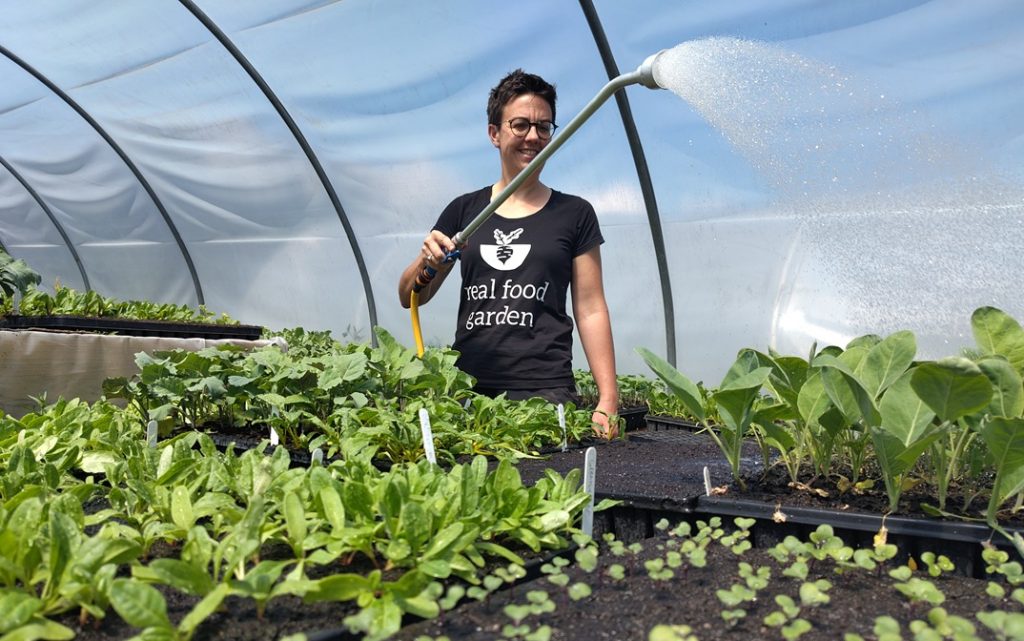Water is always a precious resource on a small farm, but this summer it’s front and centre in everything we do. As the heat intensifies, we’re working harder than ever to keep crops thriving while using water wisely.
A Season of Contrasts
After last year’s cold, wet spring, when beds stayed soggy for weeks and we struggled to get crops in the ground, it’s hard to believe how different 2025 has turned out. This June was officially England’s warmest on record, with Cornwall receiving just over half its usual May rainfall. River levels remain low, and the outlook for the rest of the summer suggests more of the same: heat, dryness, and rising pressure on water supplies.
These extremes aren’t just anomalies anymore. They’re becoming part of the pattern. And for growers like us, that means adapting every day to what the weather demands. Right now, water management is the most pressing part of the job.
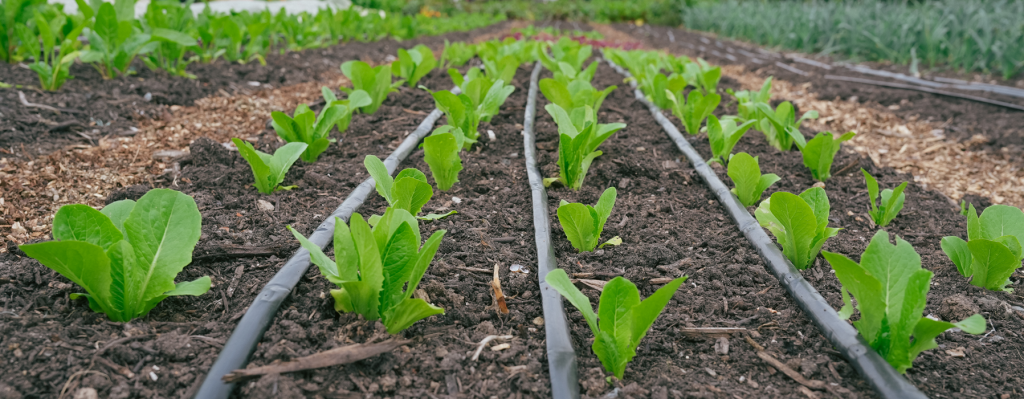
Careful, Conscious Irrigation
Each morning and evening, you’ll find Amelia in the market garden setting up and shifting sprinklers or switching on our drip tape systems. We deliberately limit sprinkler use to the cooler hours of the day, early morning and late evening, when evaporation is at its lowest. It’s not uncommon to find Amelia heading out across the field at 10pm to turn off a sprinkler, only to be back again by 7am to get it going before the sun gets too high.
During the heat of the day, we rely on drip tape, narrow tubing that runs along our crop rows, delivering water straight to the base of each plant where it’s needed most. It’s a far more efficient method than overhead watering, especially in hot conditions, and helps us target moisture exactly where it’s needed. By choosing the right approach and time of day for each crop, we try to be as water conscious and direct as possible. It’s not about using more, it’s about using better.
That said, even with all these systems in place, nothing quite replaces a good soaking rain. Our soils, improved over time with compost and cover crops, do a good job of holding onto moisture, but in prolonged dry spells like this, every drop still matters.
The Strain on Plants and People
Despite all this effort, water stress is already making its mark. Without enough moisture, some crops simply can’t thrive. Salad leaves and soft herbs like coriander are quicker to bolt, sending up flowers early and cutting their growing season short. Courgettes may drop fruit prematurely, and leafy greens struggle to recover from wilting in the heat.
This puts real pressure on the team. Even as yields drop, the workload increases with more time spent monitoring crops, replanting lost seedlings, and hand watering vulnerable plants. Heatwaves don’t just challenge the crops. They stretch the growers too.
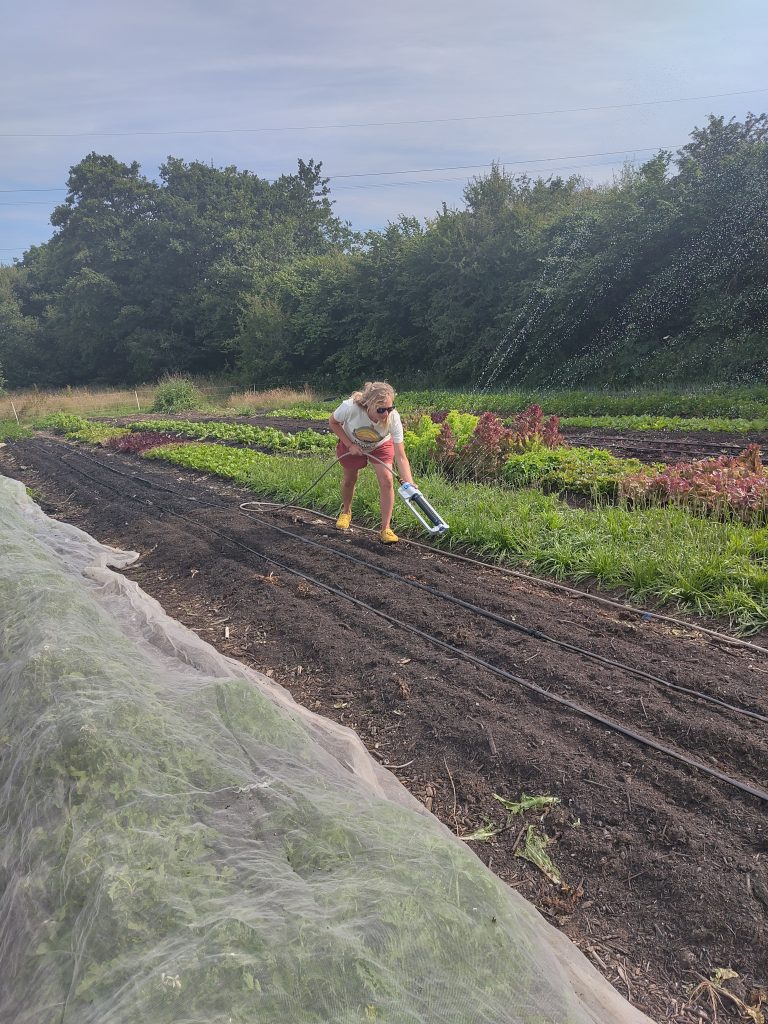
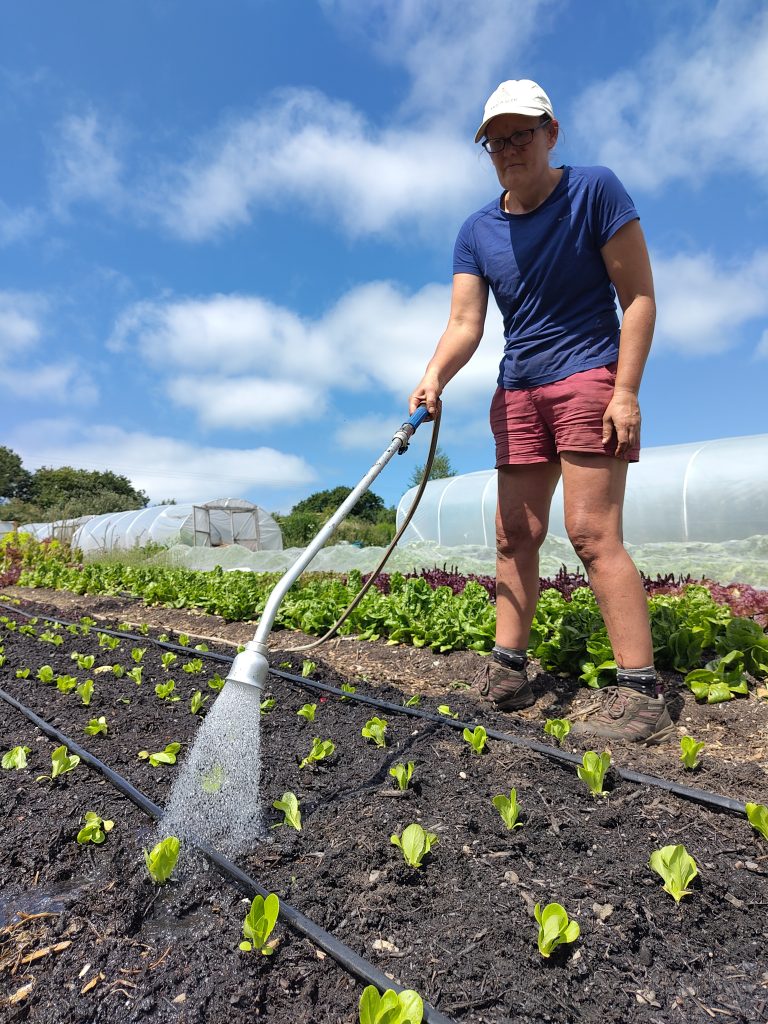
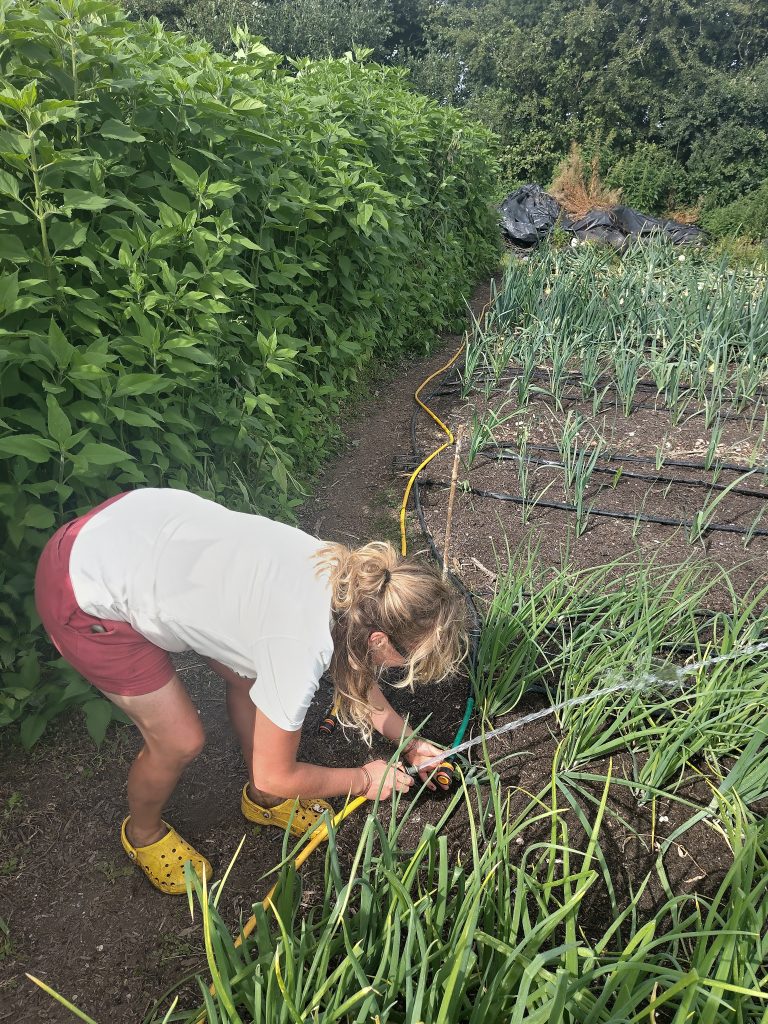
Growing with Care
One of the biggest challenges in this heat is keeping our propagation tunnel ticking over. Getting seeds to germinate in hot, dry conditions takes constant attention. Watering once a day simply isn’t enough. Th team take it in turns t0 water in there two or even three times a day, carefully adjusting conditions to give each seedling the best chance.
Each tiny plant represents time, energy and future harvests. Without consistent moisture in these early stages, we risk losing not just a crop, but weeks of careful planning and effort. Once they’re ready to move from the propagation tunnel into the field, every transplant is given a generous soak to help it settle in. Our trainees, Danni and Sunny, have been working hard to hand water freshly planted crops, making sure each young plant has the best possible start.
These moments of watching carefully, responding quickly, and giving each plant what it needs are what define our growing approach. It’s not just about outputs. It’s about the daily relationship between people, plants and place.
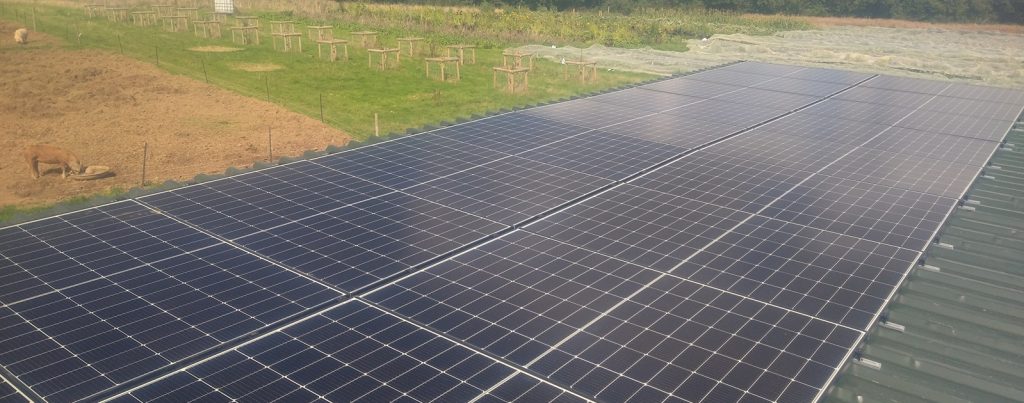
Powered by Nature
From the outset, we invested in an onsite borehole, giving us a reliable source of water without depending on the mains. Not long after, we added a solar array on the south facing roof of our barn. It’s a system that makes perfect sense for our farm: when the sun is at its strongest and crops are thirstiest, our solar panels are generating the most power. That means our irrigation pumps run on our own renewable electricity. The result is a system that’s efficient, low impact, and grounded in the natural resources we have on site. It’s designed for resilience, shaped to fit our scale, our land, and our way of growing.
Still, even the best system doesn’t eliminate the challenges. The demands of this summer are a reminder that growing food is as much about responding to change as it is about planning.
Looking Ahead
We know these hot, dry spells aren’t going away. But neither is our commitment to growing good food with respect and reciprocity. Each season, we learn more about how to respond, how to design our systems to work with the land, and how to stay attentive in the face of uncertainty.
So when you unpack one of our veg boxes or pop into our farm shop, know that behind it is more than just sun and soil. It’s late night sprinkler shifts, hand watering in the tunnels, and a daily dance with the weather, all done in the hope that good food can still be grown, even in the heat.
